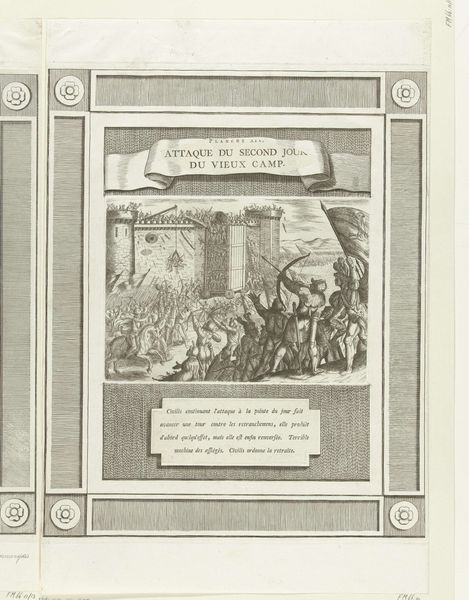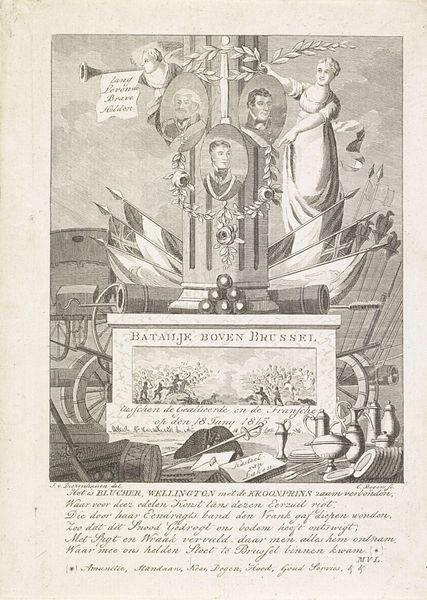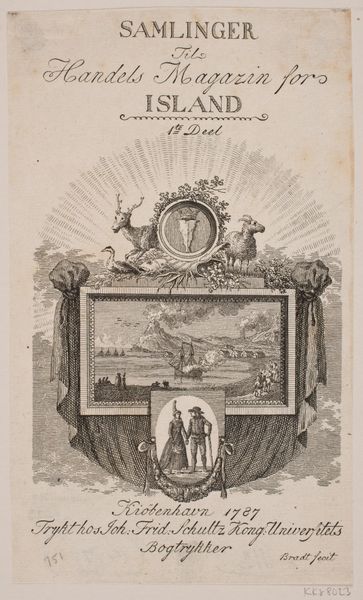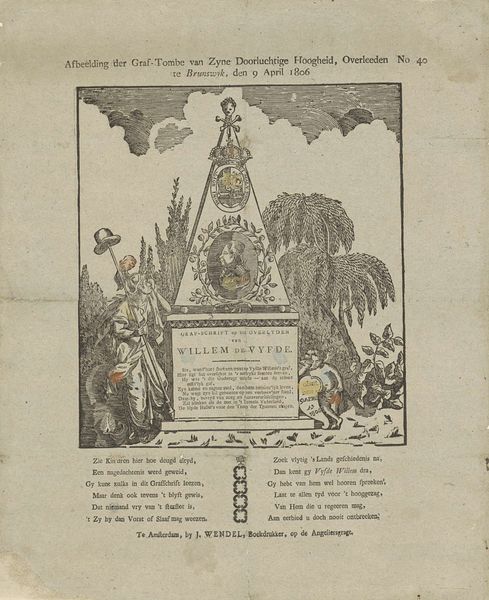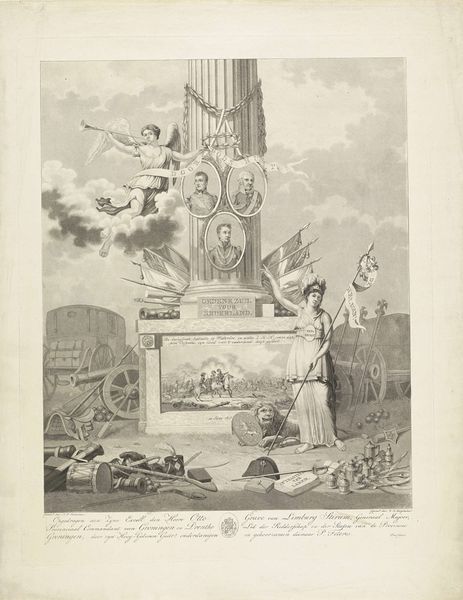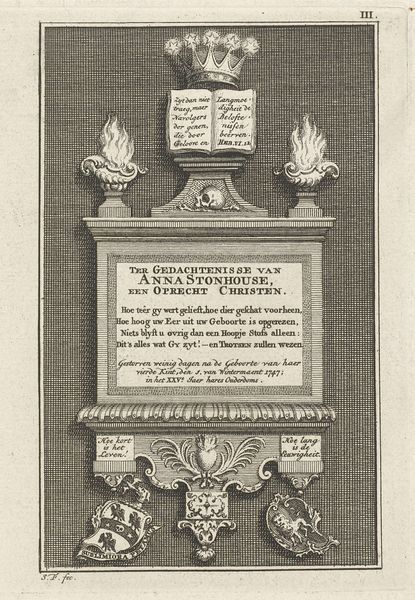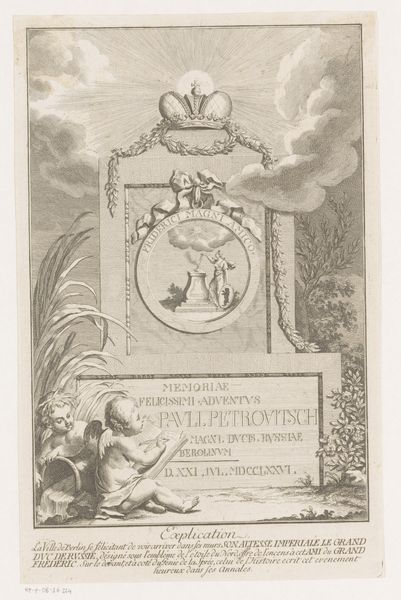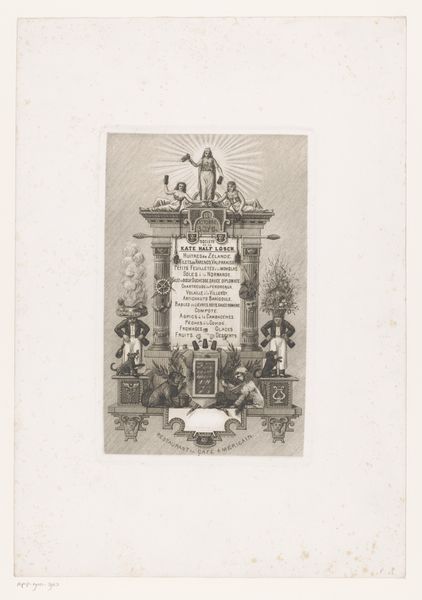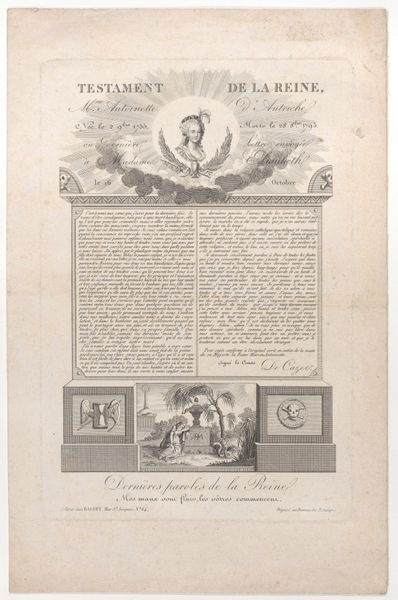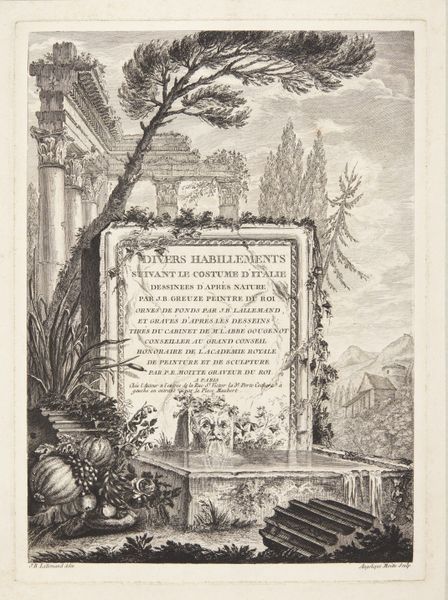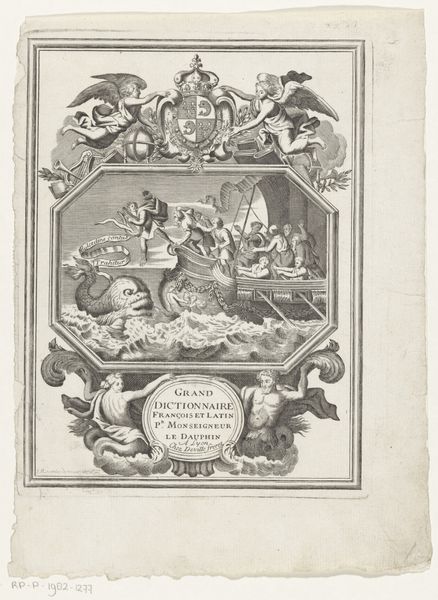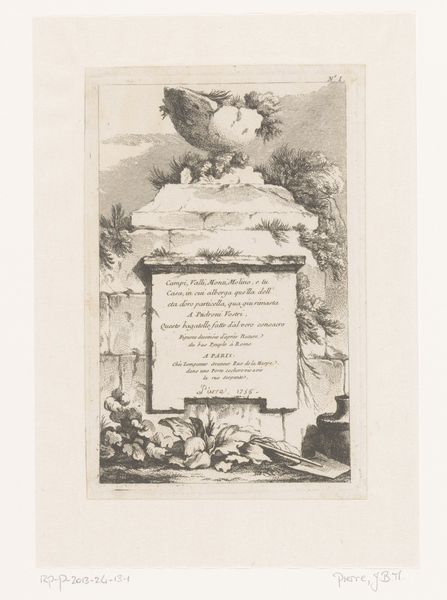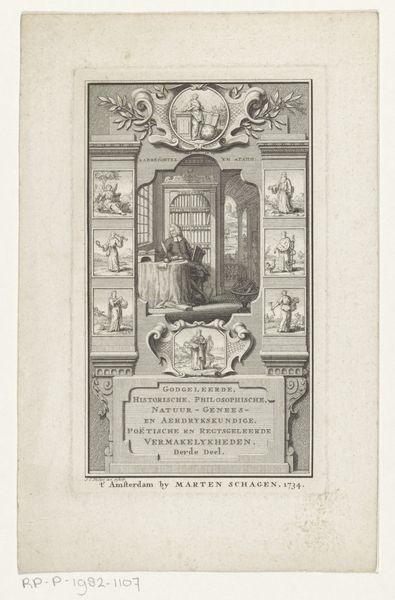
Dimensions: Sheet: 8 1/4 × 5 1/8 in. (20.9 × 13 cm)
Copyright: Public Domain
Curator: Let’s consider this trade card for Bisset’s Directory, Birmingham, created around 1800, now residing at the Metropolitan Museum. I find its composition quite busy, with six distinct vignettes crammed onto one surface. Editor: Yes, it does present a rather dense visual field! I am struck by the contrast between the almost whimsical Rococo elements and the stern geometries, all in monochrome print work. The light feels uniformly distributed, contributing to a slight flattening effect despite the attempts at depth. Curator: Indeed, Thomas Hancock, the creator, orchestrates a rather elaborate, almost baroque design. The print medium constrains tonal variations, emphasizing line and form to compensate. Notice the repetition of plinths as framing devices? Editor: They function almost like miniature stages! Is this an example of businesses commissioning elaborate cards as a form of conspicuous display, mirroring aristocratic portraiture perhaps? These must have been rather collectible… Curator: Absolutely. The directory itself catered to the aspirational middle class in a rapidly industrializing Birmingham. The elaborate engravings reinforced notions of prosperity, prestige, and a visual embodiment of the burgeoning commercial sector. Take, for example, the bottom section. What kind of statement would it make when "Contractors to his Majesty's Board of Ordinance" appeared on an engraving used as an advertisement? Editor: This would definitely contribute to a perceived high status, right? How clever is the deployment of baroque ornamentation, like cartouches and flourishing scripts. Look closely, too: at the bottom a charming scene featuring canons. The smoke suggests activity. This also reinforces the connection to the suppliers of the "Board of Ordinance," in turn also alluding to military might. Curator: The composition is deliberately curated. These are all designed to present an image of commercial power and patriotic service intertwined, aimed to create visual memorability and also a strong association in potential customers' minds. Editor: Analyzing this "Trade Card," we not only unravel commercial history, but understand that the intrinsic qualities of the baroque line work add to the larger social function, which brings into sharp focus the importance of commerce in this historical moment. Curator: I find it fascinating how a single print can encapsulate so many layers of meaning and reflect so much of its historical context. Editor: A single printed object opens multiple avenues of appreciation. And reminds me just how complex a simple image can truly be.
Comments
No comments
Be the first to comment and join the conversation on the ultimate creative platform.
